We had an easy hike to the top of the highest point in Panama City, Cerro Ancon, and I wasn’t going to blog about it, but it was more amazing than expected and since a little turn at the bottom of the hill brought us to another great place, a blog is written.
Like Parque Natural Metropolitono (http://heathers6wadventures.com/bosque-encantado-enchanted-forest/), Cerro Ancon is a green, quiet, jungle-y oasis in a crowded, noisy city. Stairs and a paved road that’s not open to regular traffic lead to the top of the hill, which since 1977 has sported a Panamanian flag the size of a basketball court. You can see it from almost everywhere in town.
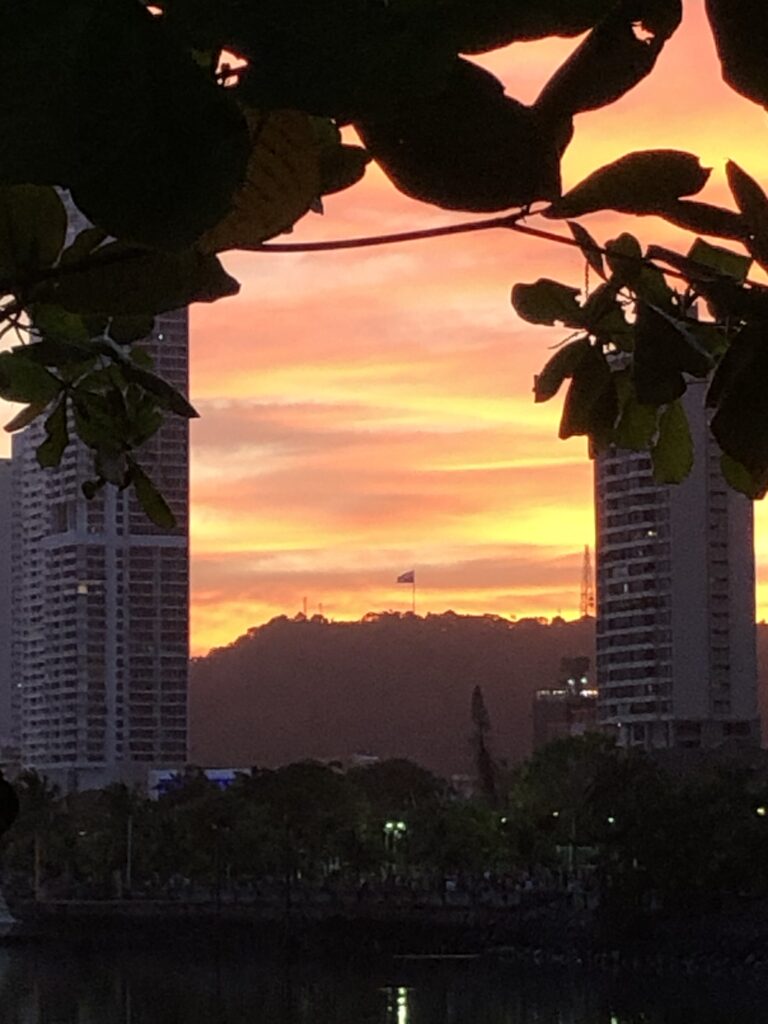
Cerro Ancon at sunset 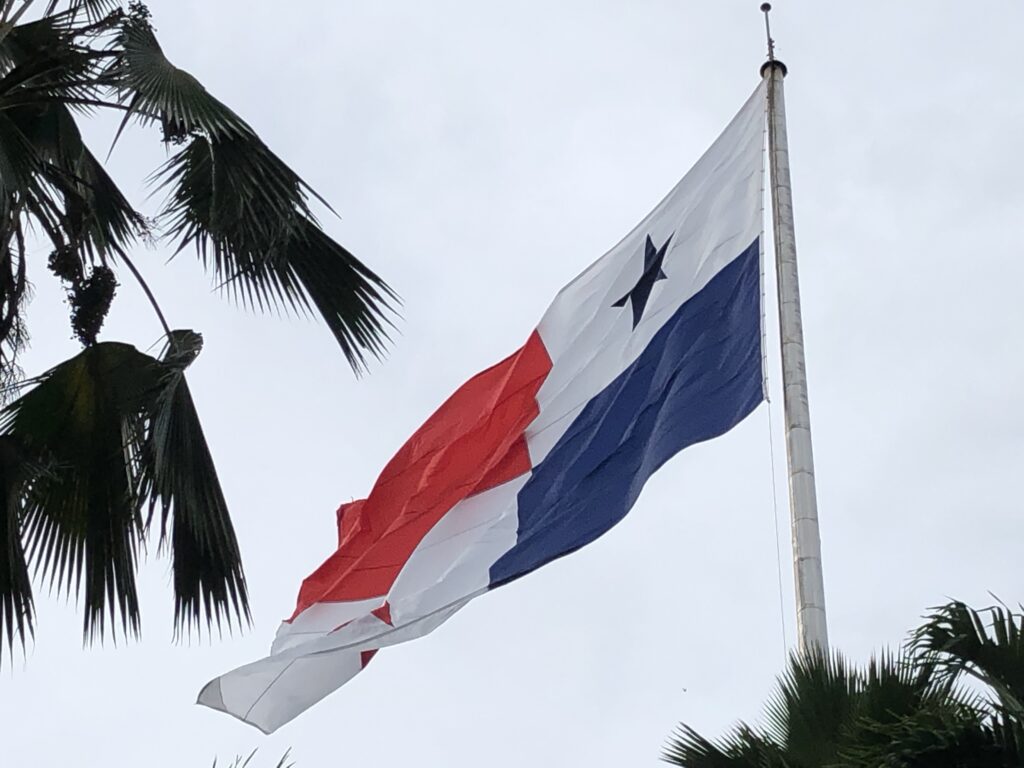
Basketball court size flag 
View of the city from the hill
The hike is short, probably 30 minutes for people not obsessed with looking for birds. It’s nicely shaded in the morning and usually has a brisk breeze keeping that flag fluttering. The 42-hectare reserve is full of critters, including monkeys, sloths, deer, at least one boa constrictor, armadillos, sologatos (coatis en ingles), and an ocelot, none of which we saw. We did see a frog, agoutis, an iguana, and many, many birds, including one of our main objectives of the trip, toucans, and we saw about 10 of them. With those large bills, they look rather funny in flight, almost like they can’t get lift or balance between the front and the back. We also heard many of them calling; they sound remarkably like frogs.
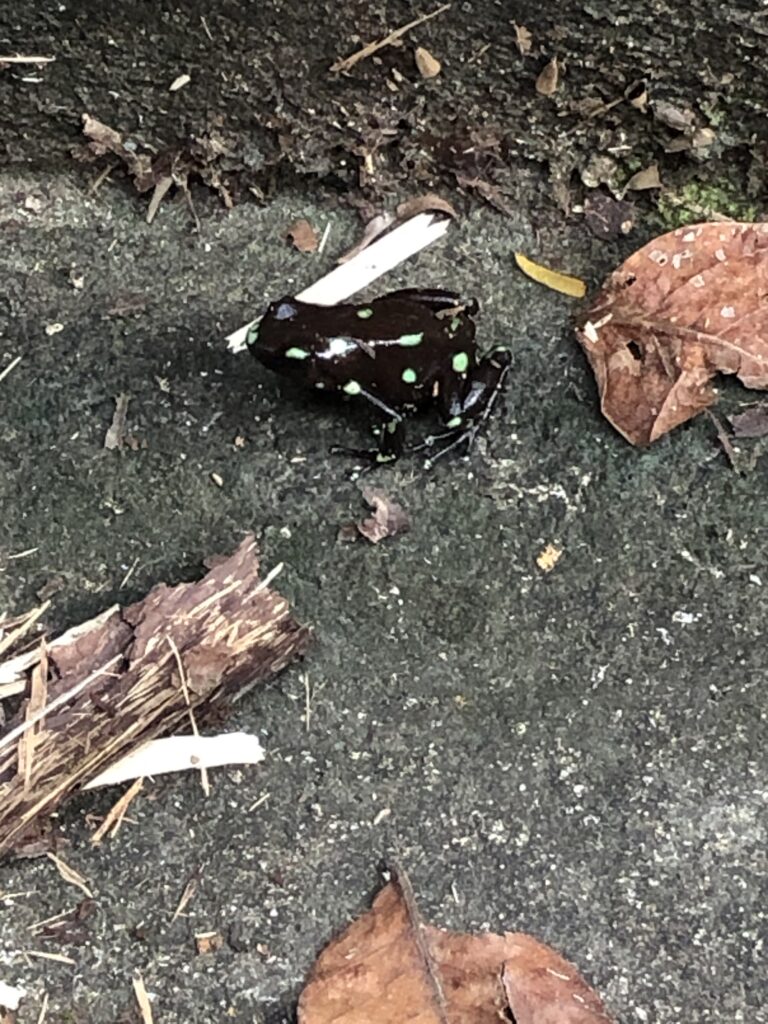
Frog! 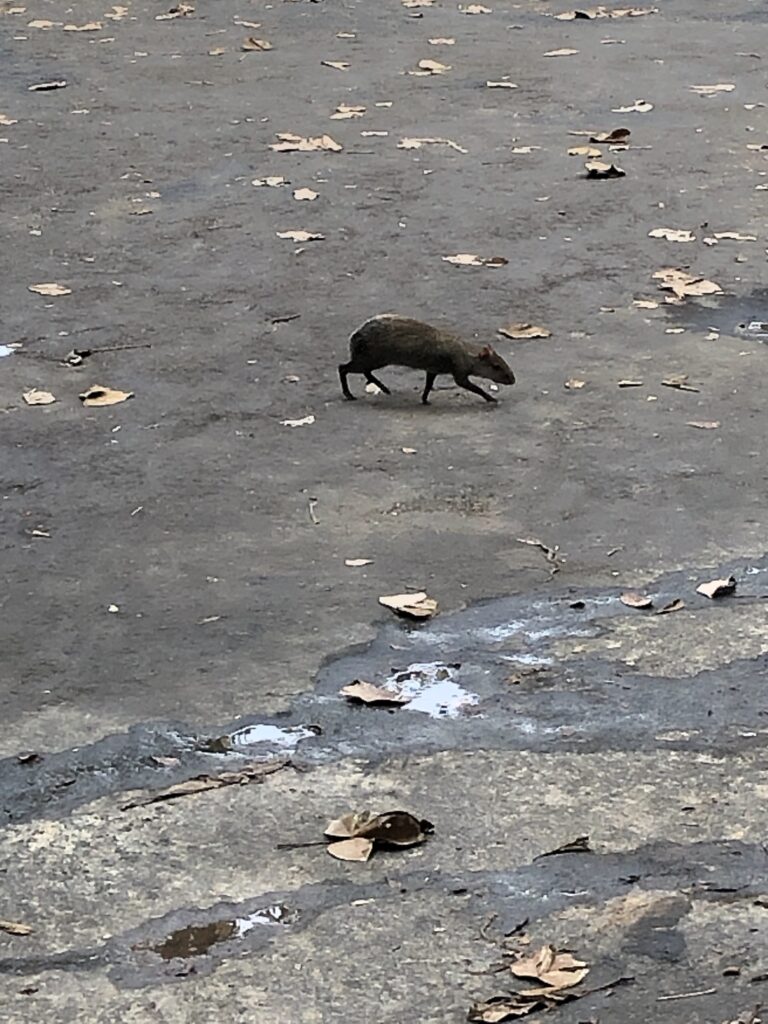
Agouti 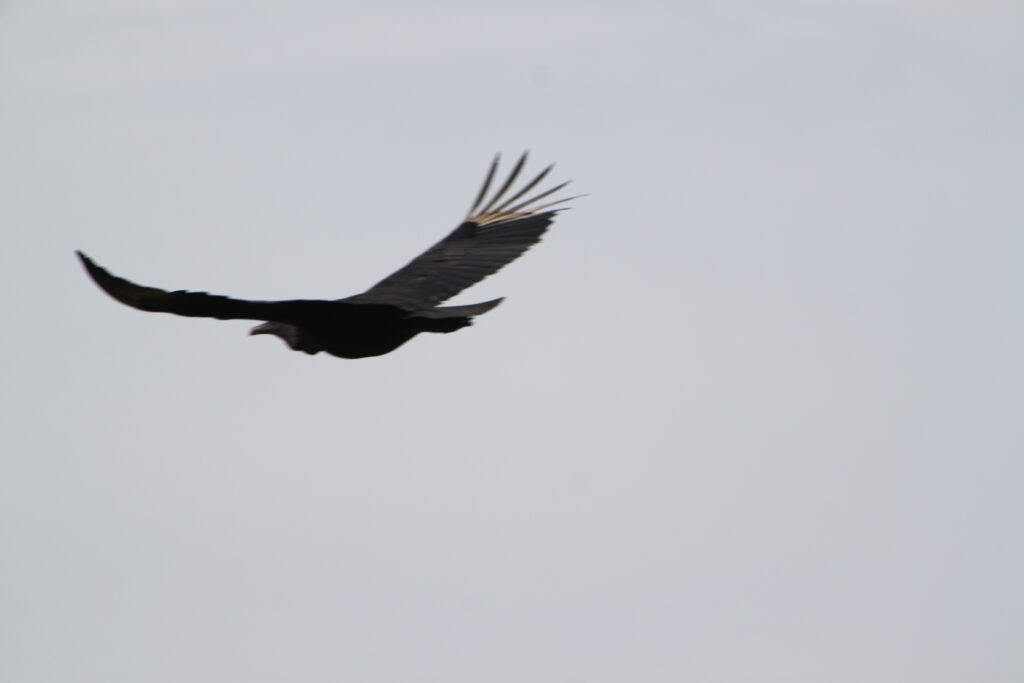
Vulture 
Lineated Woodpecker 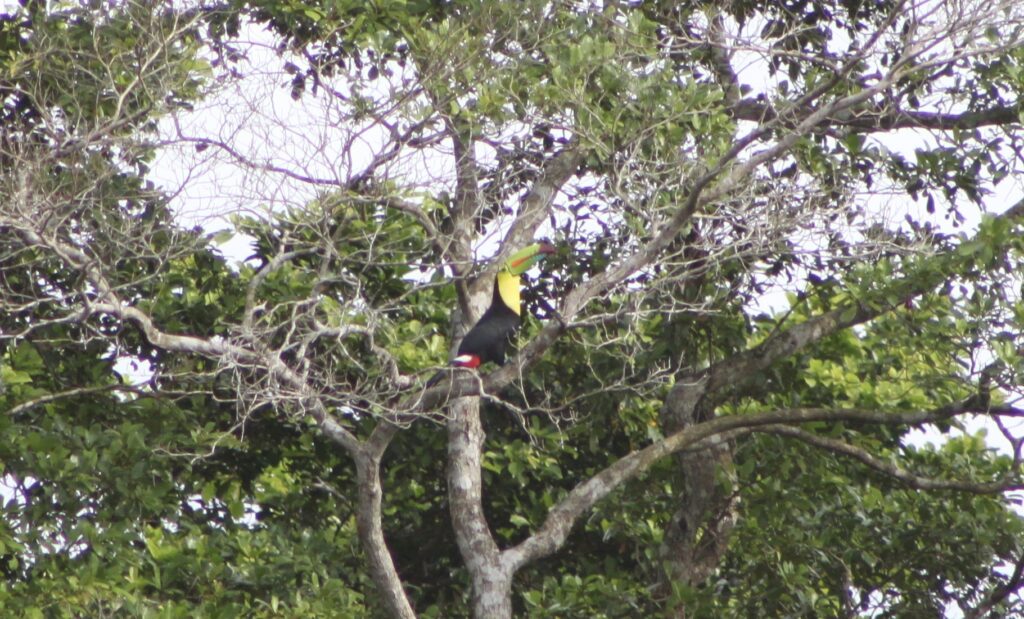
Keel-billed Toucan
Back in 1906, shortly after Panama had gained its independence from Colombia and as the United States was moving in to build the Panama Canal, poet Amelia Denis de Icaza lamented the country’s loss of sovereignty. In a moving piece, Al Cerro Ancon, she asked the hill questions essentially about why it wasn’t doing a better job of taking care of the country. It’s a truly beautiful poem in both Spanish and English. I encourage you to read it. The full poem is here, https://es.wikisource.org/wiki/Al_Cerro_Anc%C3%B3n; an example of a verse and its translation is below.
¿Qué has hecho de tus árboles y flores,
mudo atalaya del tranquilo mar?
¡Mis suspiros, mis ansias, mis dolores,
te llevarán las brisas al pasar!
What have you made of your trees and flowers,
silent watchtower of the calm sea?
My sighs, my cravings, my pains,
will bring you the breezes as you pass!
Near the top of the hill are a marker and sculpture dedicated to the Amelia Denis de Icaza, as well as a marker noting the 1977 agreement between Panama and the United States, the Torrijos-Carter Treaty, returning the Canal and the Canal Zone to Panama. That and the basketball-court-sized flag are poignant reminders of the pride Panamanians have in their country.
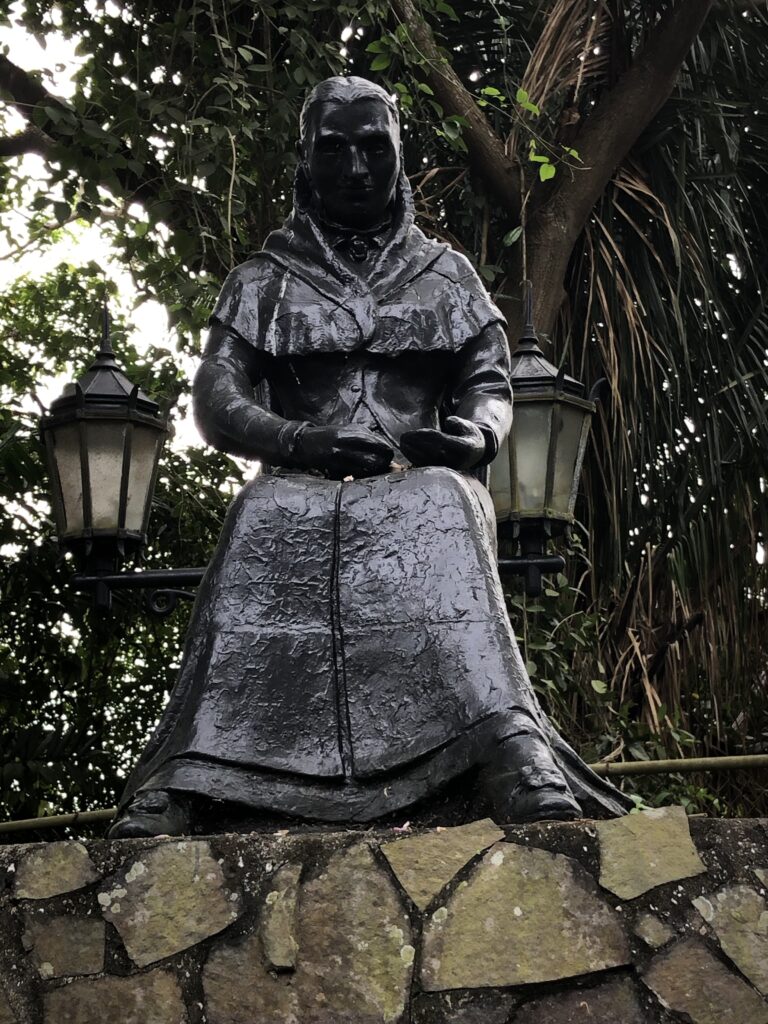
One of the greatest things about Cerro Ancon is the ability to look at the Panama Canal from the top. (Have I mentioned once or twice—or maybe 100 times—that I love the Panama Canal, the coolest place on earth? (http://heathers6wadventures.com/coolest-place-en-el-mundo/) An amazing thing about seeing it from Ancon is you can see everything happening at once. The Mira Flores, Pedro Miguel, and Cocoli locks, as well as the Bridge of the Americas and the Centennial Bridge are all visible from one spot. Wow was it busy! Two ships in the new Cocoli locks, a ship in Pedro Miguel, a ship just leaving Mira Flores, and two ships entering Mira Flores—all at the same time! Between the birds flying overhead, the butterflies circling around us, and the ships moving all through the canal, we might have been able to stay on top of Cerro Ancon all day, especially in the beautiful sea breeze.
However, we were glad we didn’t. On a whim, we stopped by Mi Pueblito, at the bottom of the hill.
The village, intended to interpret the various cultures and cultural influences throughout the country’s history, is run by the City of Panama (Alcalde de Panama). It has some pretty bad reviews online, and it certainly is a bit contrived. However, we had an excellent guide who grew up in the interior of the country, and his enthusiasm for his subject was infectious.
The interpretive center is a reconstruction of Spanish colonial and indigenous cultural sites, from the home to the church to the school. It has amazing artifacts, some dating back more than 100 years. The kitchen included an interior horno, just like the rounded ovens in New Mexico. In Panama, they were built into the kitchen rather than outdoors to help repel mosquitos from the house.
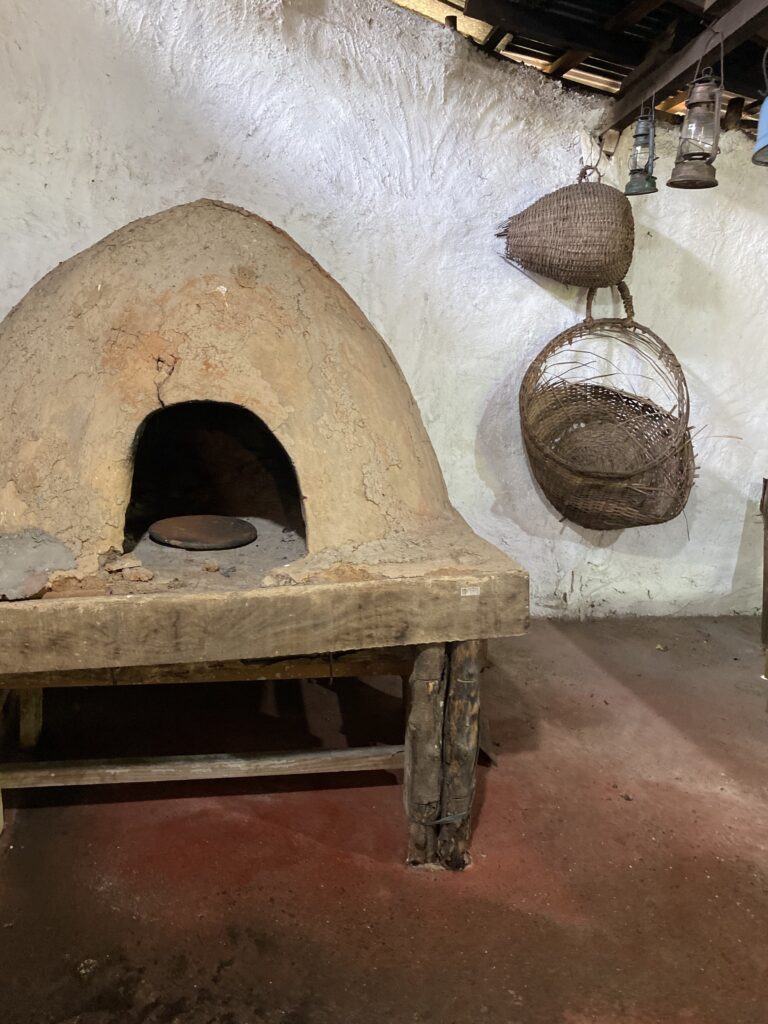
Indoor horno 
Harpy Eagle Carving 
Early 1900s Alcalde Office 
Catholic Church recreation with an old mahogany alter
One room at Mi Pueblito is wholly dedicated to the pollera, the traditional dresses of Panama, and some of the ones on display are more than 100 years old. The handiwork is gorgeous. Today, the dresses take about two years to complete, or you can purchase one for between $5,000 and $11,000! The full regalia with jewelry and head dress can be up to $18,000, depending on how many carets you want the gold necklaces to be. The story behind the name pollera is that the women would flutter the wide skirts to gather together the chickens (pollo). We found it hard to imagine that anyone would wear these stunning, intricate, and delicate gowns for such work, but our guide assured us that women in the interior of the country never stopped working, even when they were dressed up for the many, many fiestas (fiesta for pineapple, fiesta for the coconut, fiesta for the sugarcane). We think our guide has a good sense of humor!
He was quite comedic when he told us about the real Panama hat (see photo below), not those fakes made in Ecuador. The way the hat brim is worn into a village has various meanings. Always be careful how you wear your Panama hat!
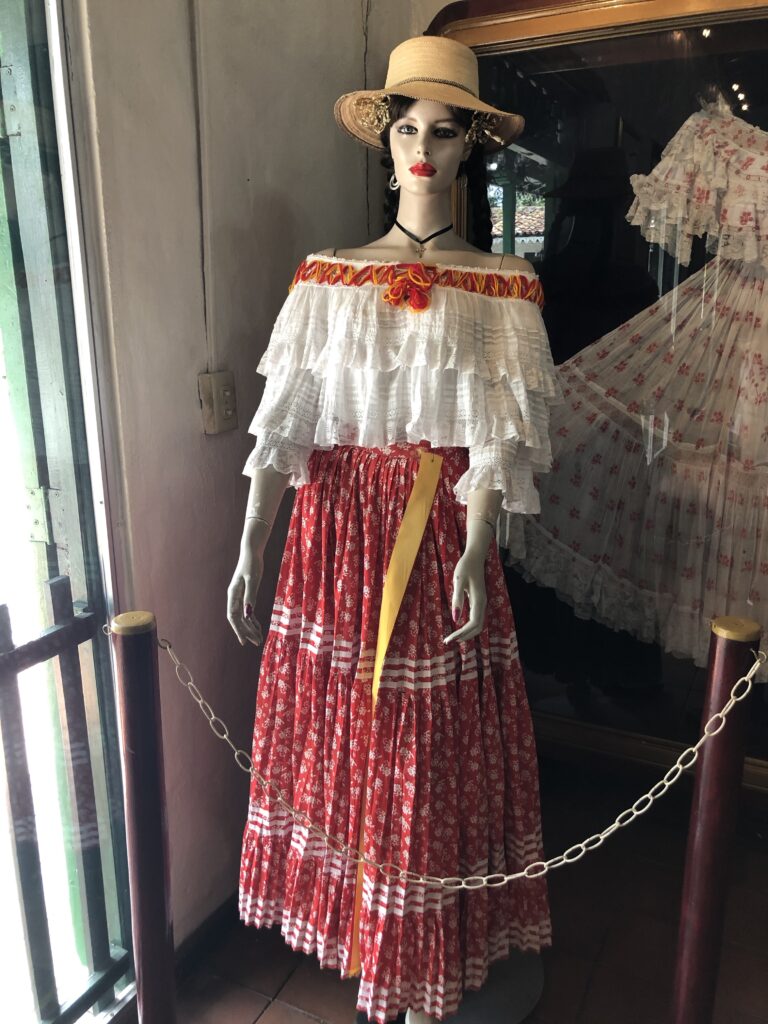
Everyday dress 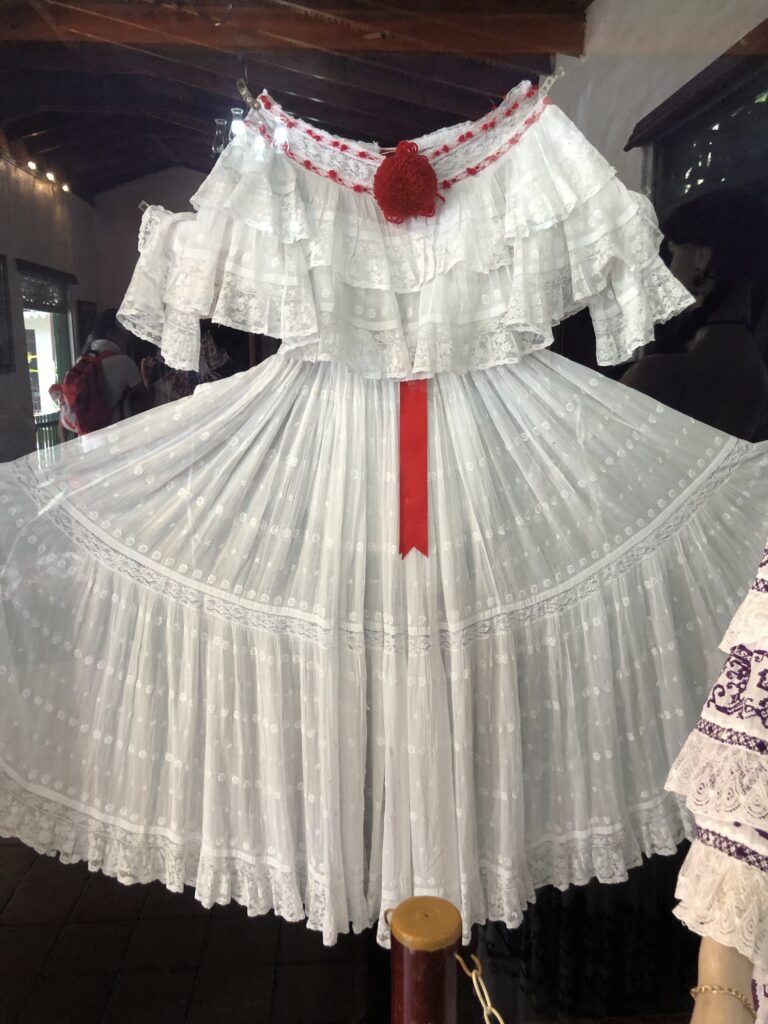
Beautiful pollera 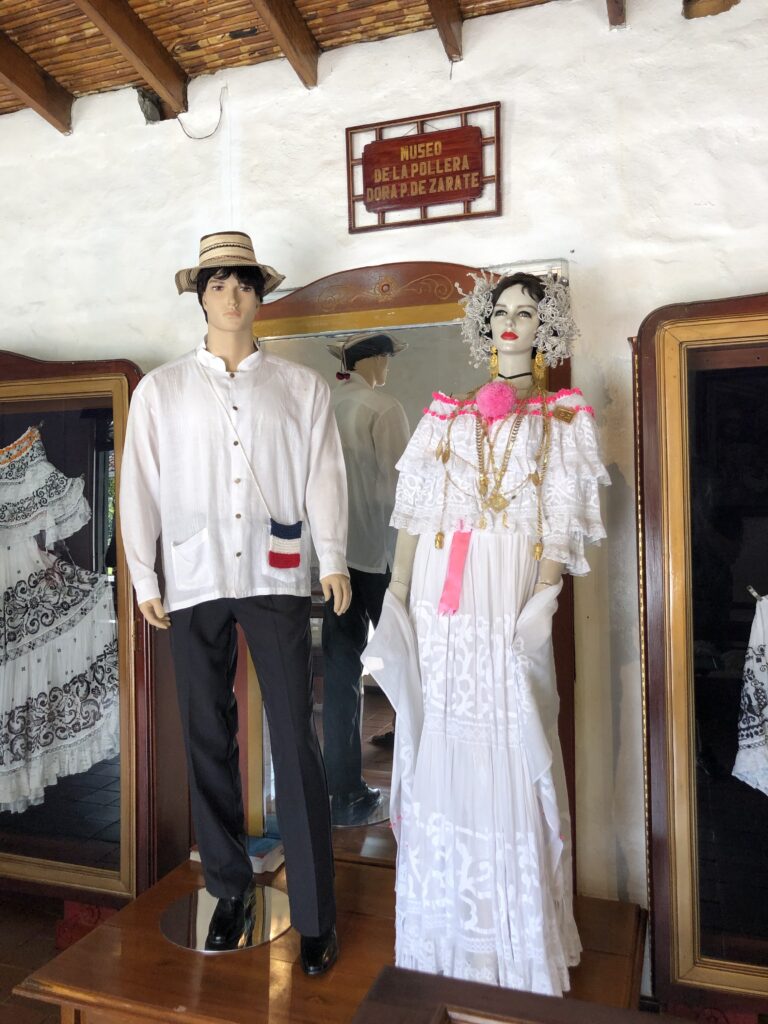
A real Panama hat! 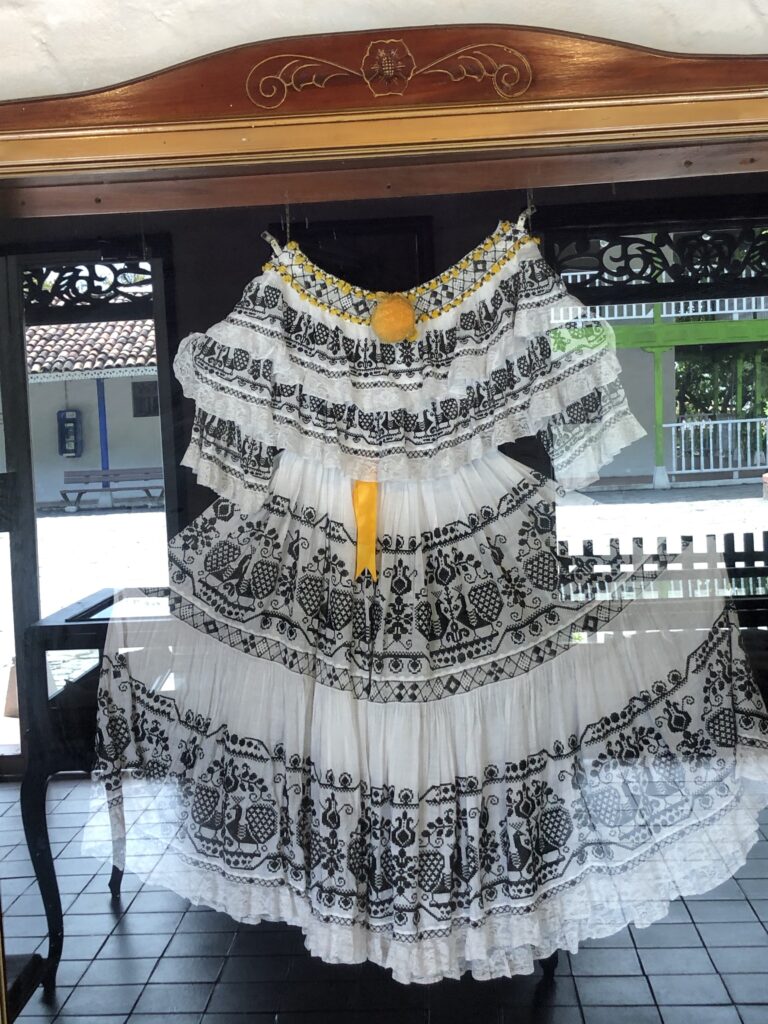
Beautiful pollera (sorry for the glare) 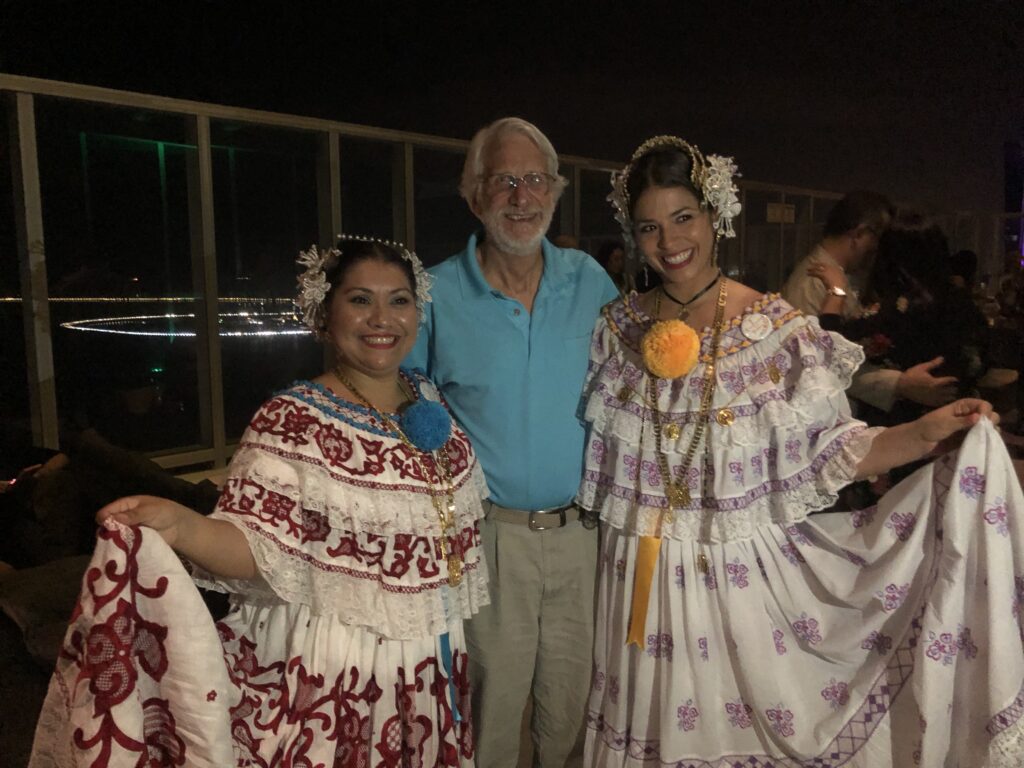
Bob with our friends in traditional dress for the National Holidays.
Across the street from the Spanish (and a bit of American)-influenced interpretative area is an entire fake village that includes American and African touches to Panama. It’s actually quite pretty, with its bright colors and nicely designed buildings that are reminiscent of the buildings we saw two years ago in Bocas del Toro (not a coincidence—they were copied from buildings in Bocas). They include the banana boss’ house, a charity house, a workers’ home, and a cute church.
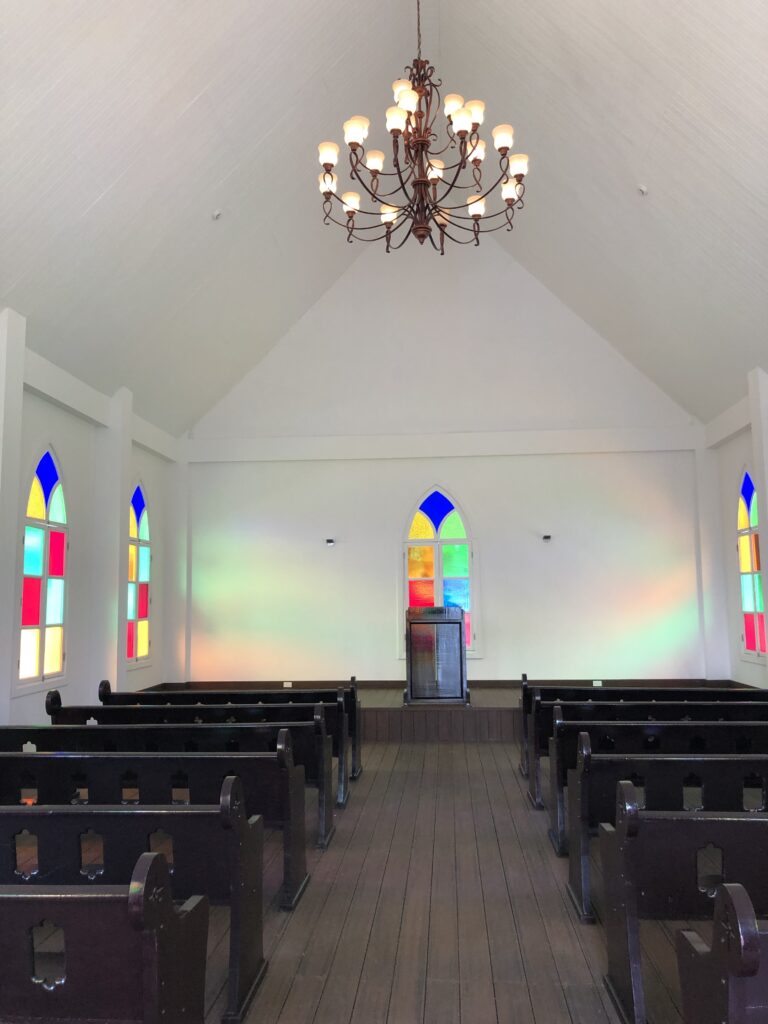
Anglican church interior 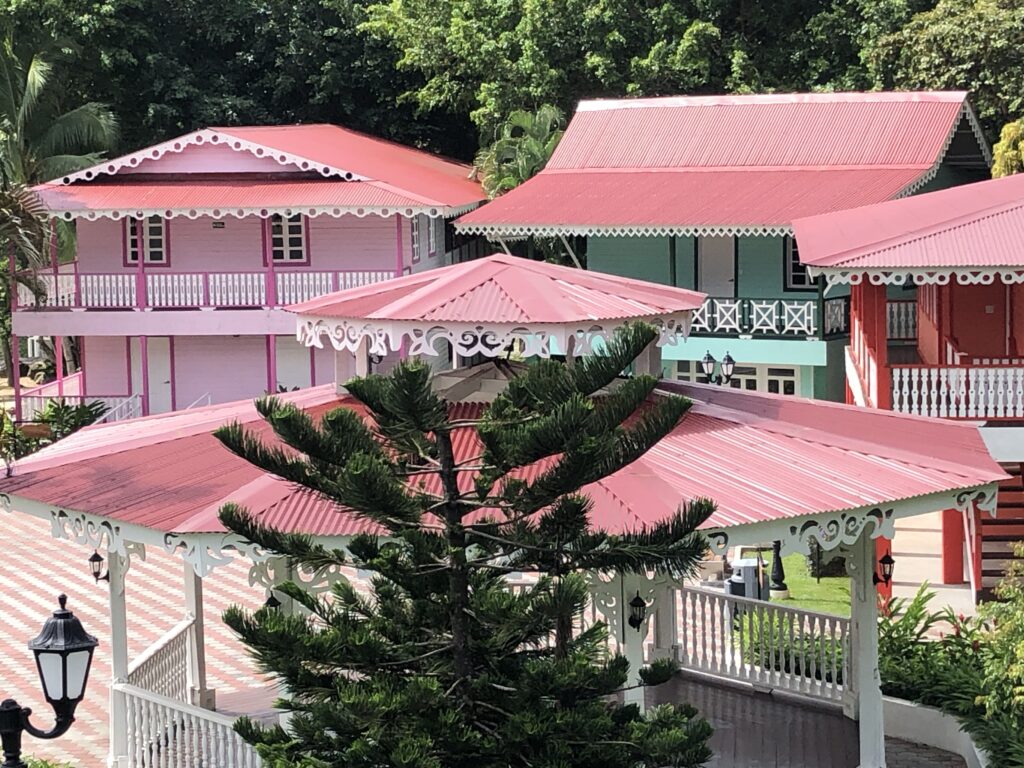

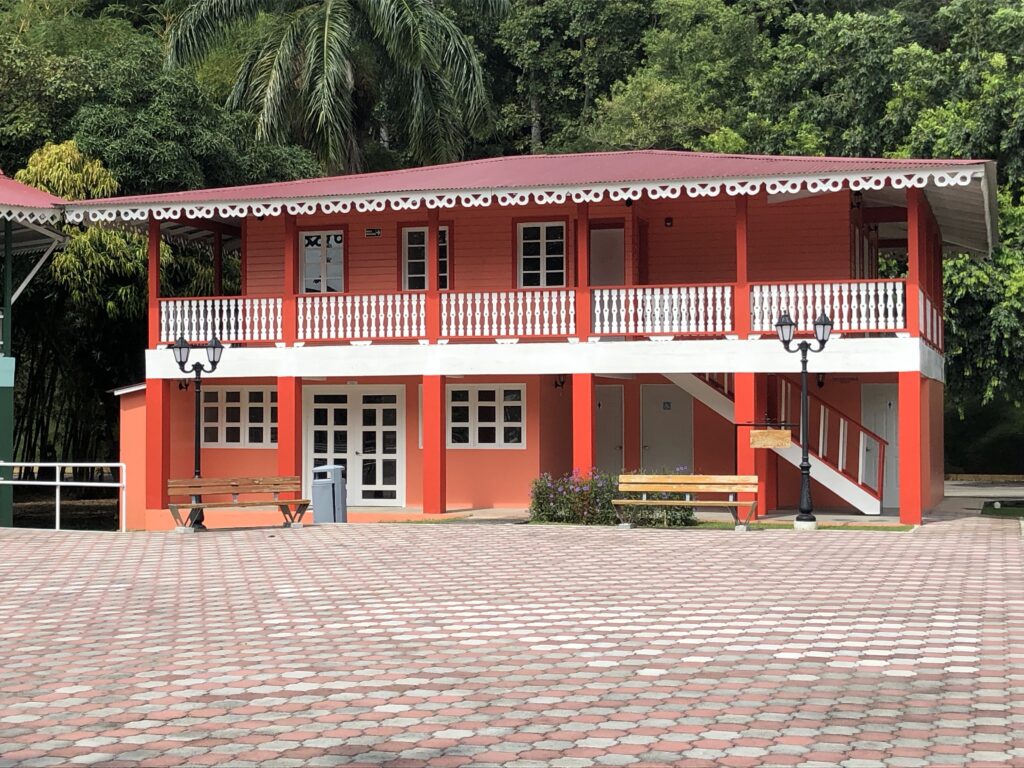
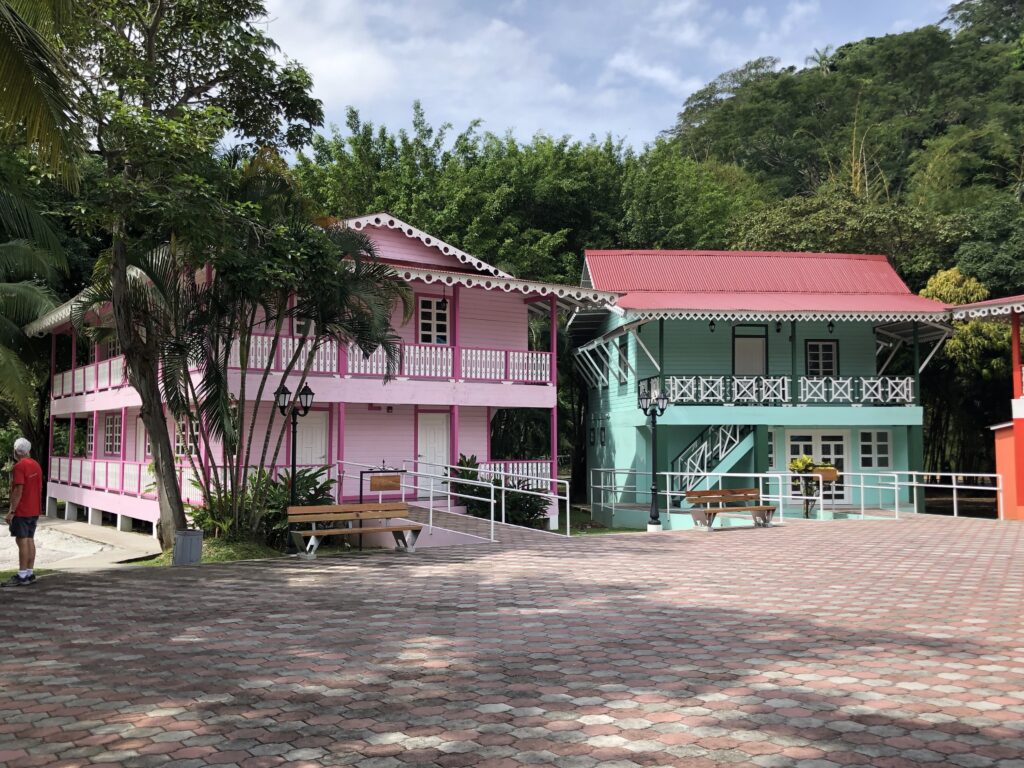
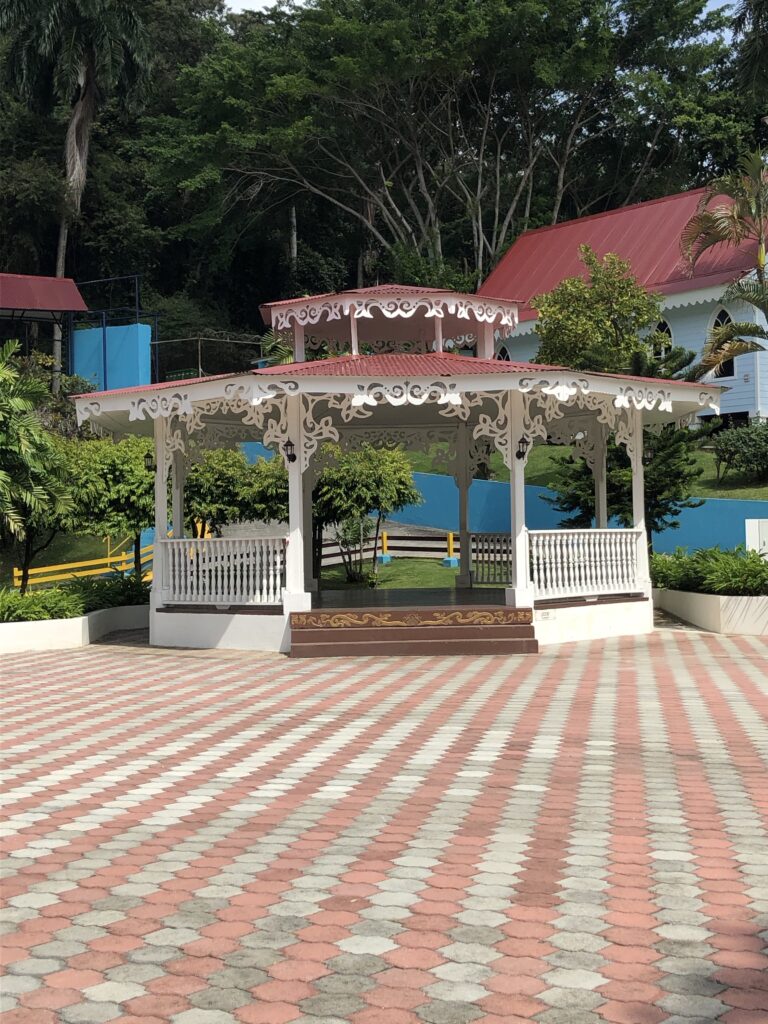
Probably our favorite part of the entire complex is a large water feature that is a monument to the 20,000+ people who died while building the Panama Canal (most during the French construction project that predated the Americans). The feature mimics the two oceans joined by the canal and is clean and peaceful.
Within the next year, the site hopes to begin construction on representations of villages of the five indigenous groups in Panama. They are all quite different culturally and even physically, so we look forward to learning more.
Mi Pueblito was not crowded. Admission was only $3 per person, and a guide (Spanish and English are both available) is essential because none of the buildings or rooms have interpretive signage. If you have just a short time in Panama and are going to make the easy hike to the top of Cerro Ancon, anyway, it’s worth a stop.
As for Cerro Ancon, we are going back tomorrow!

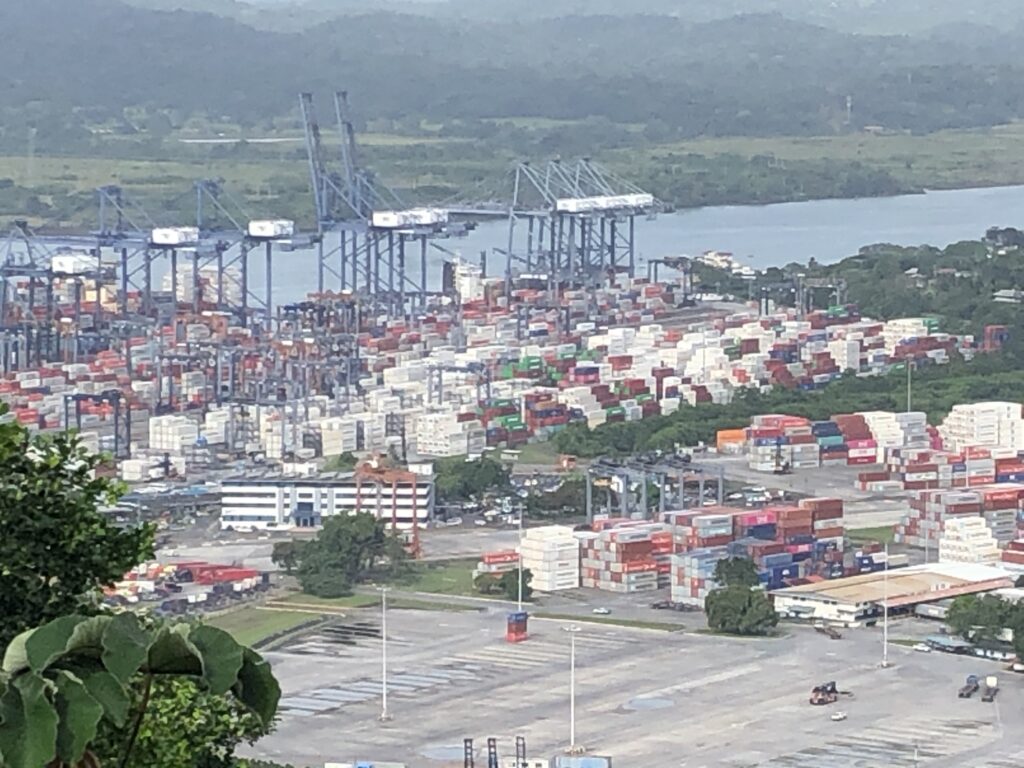
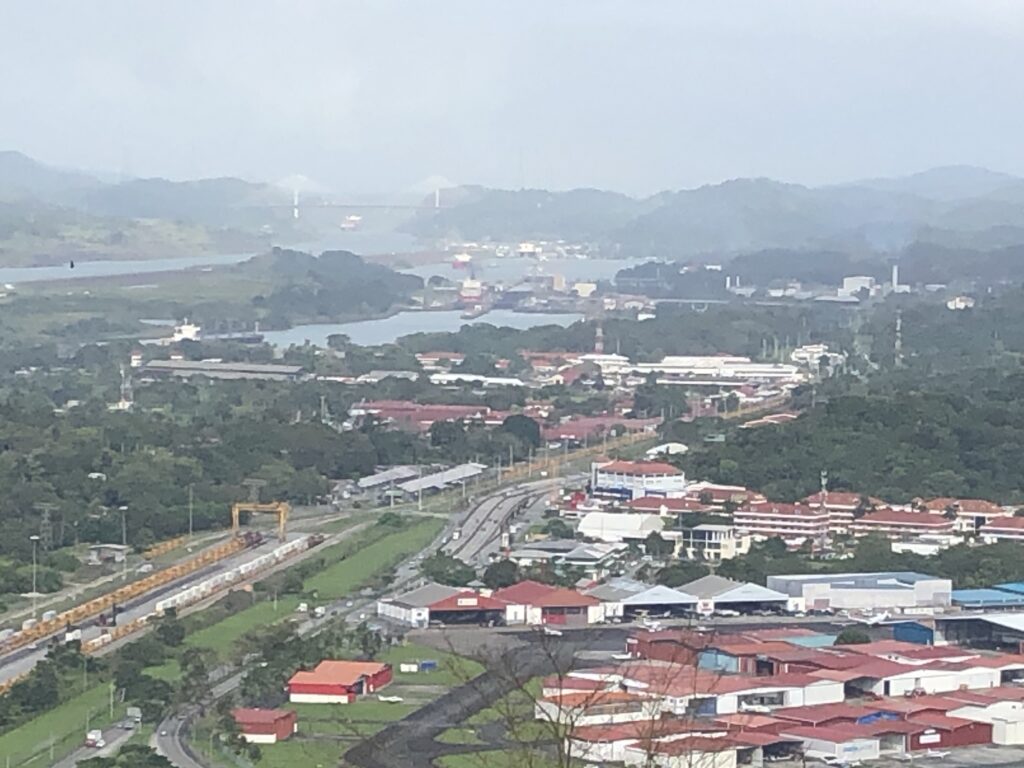
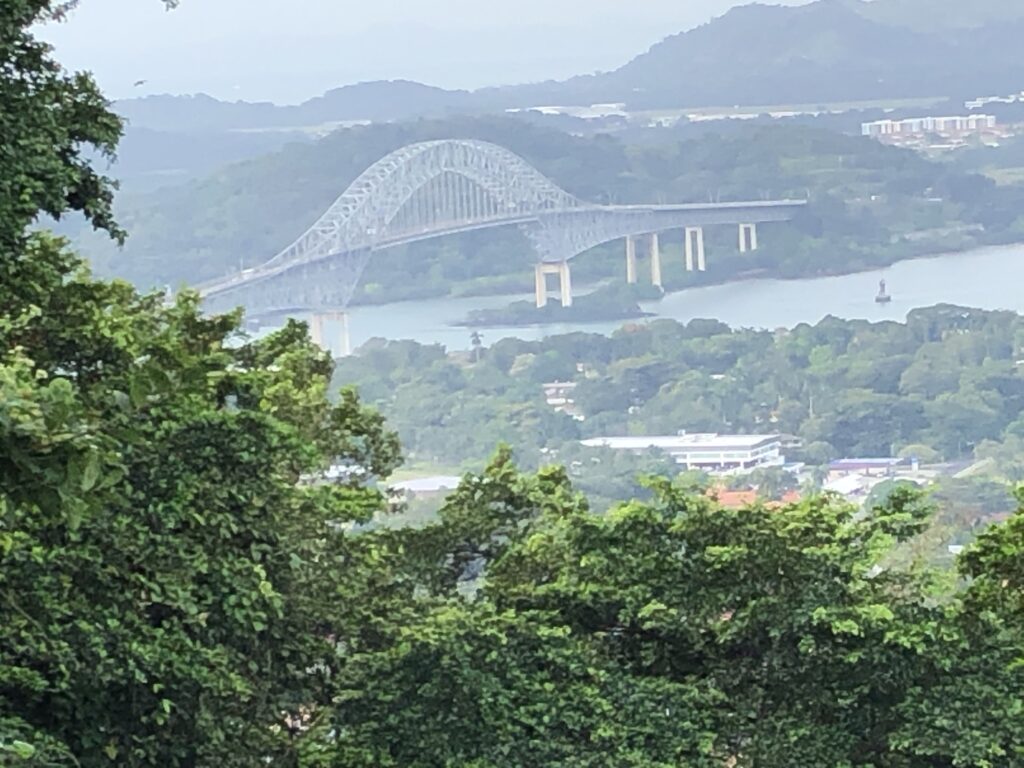
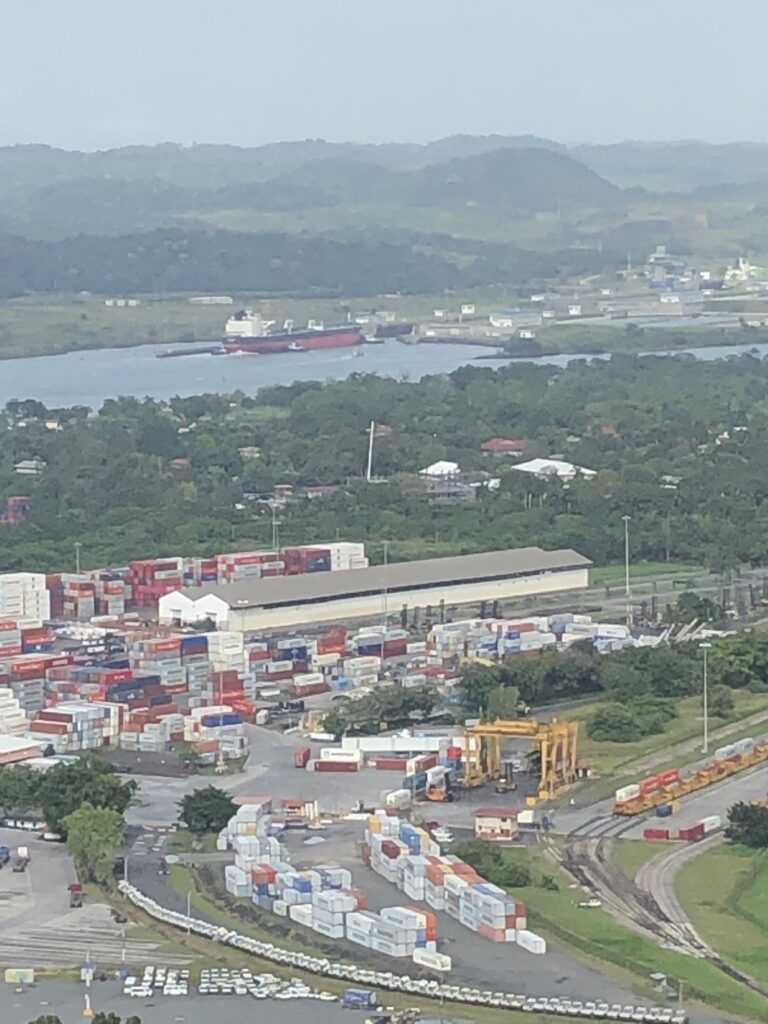
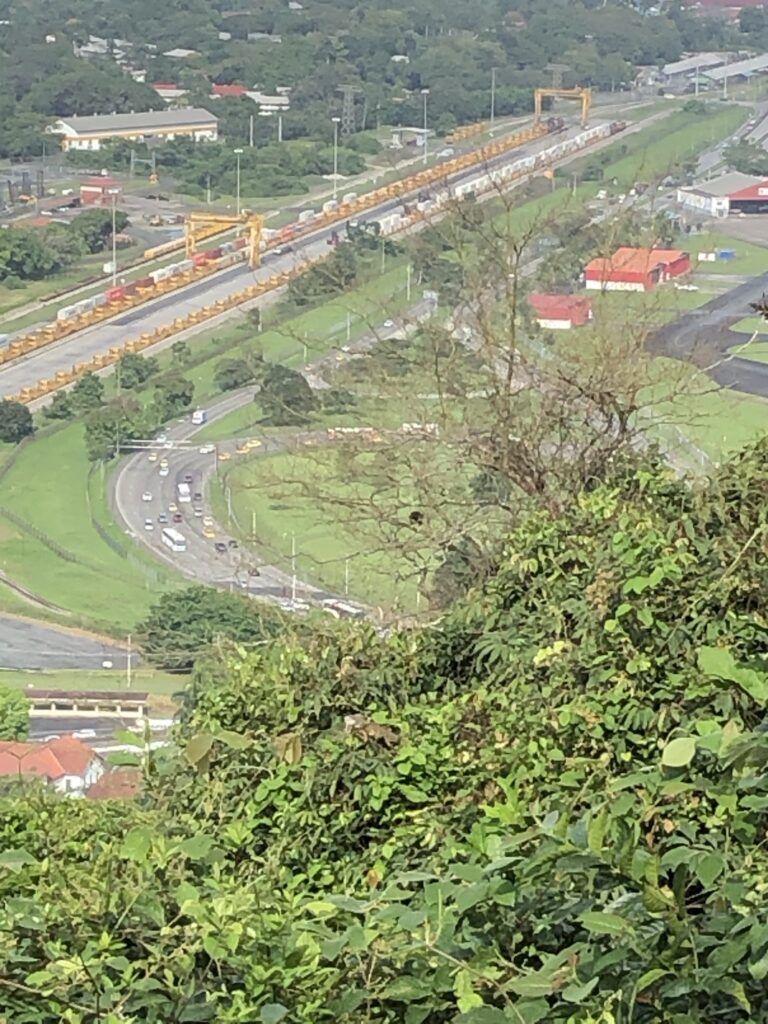

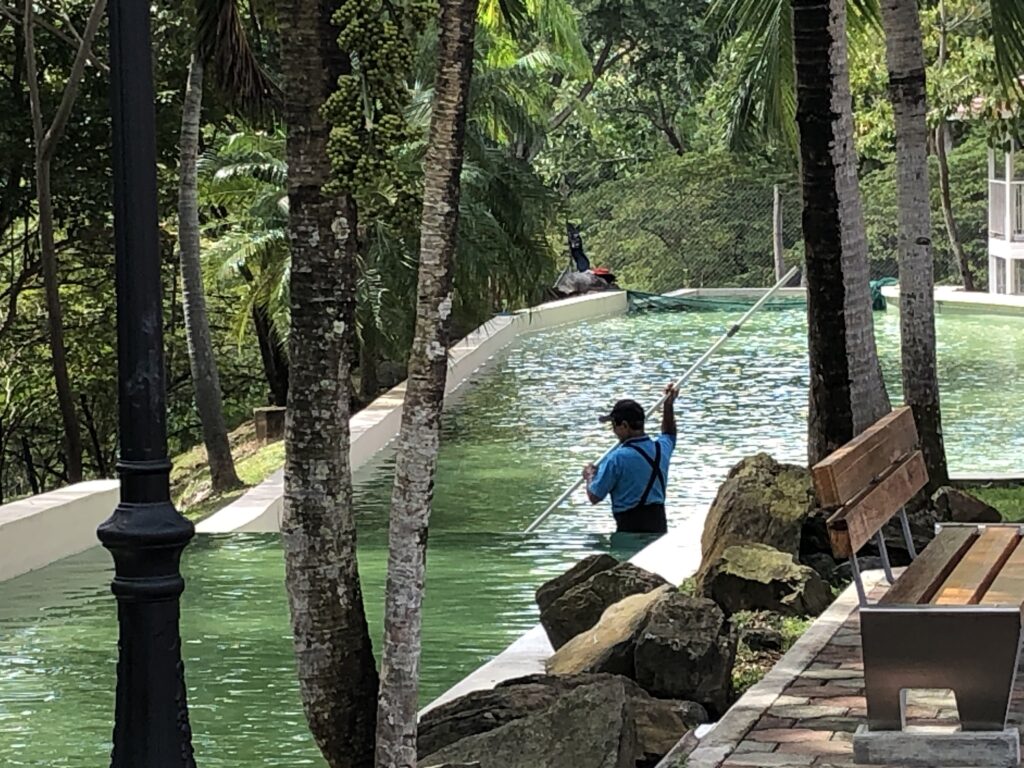
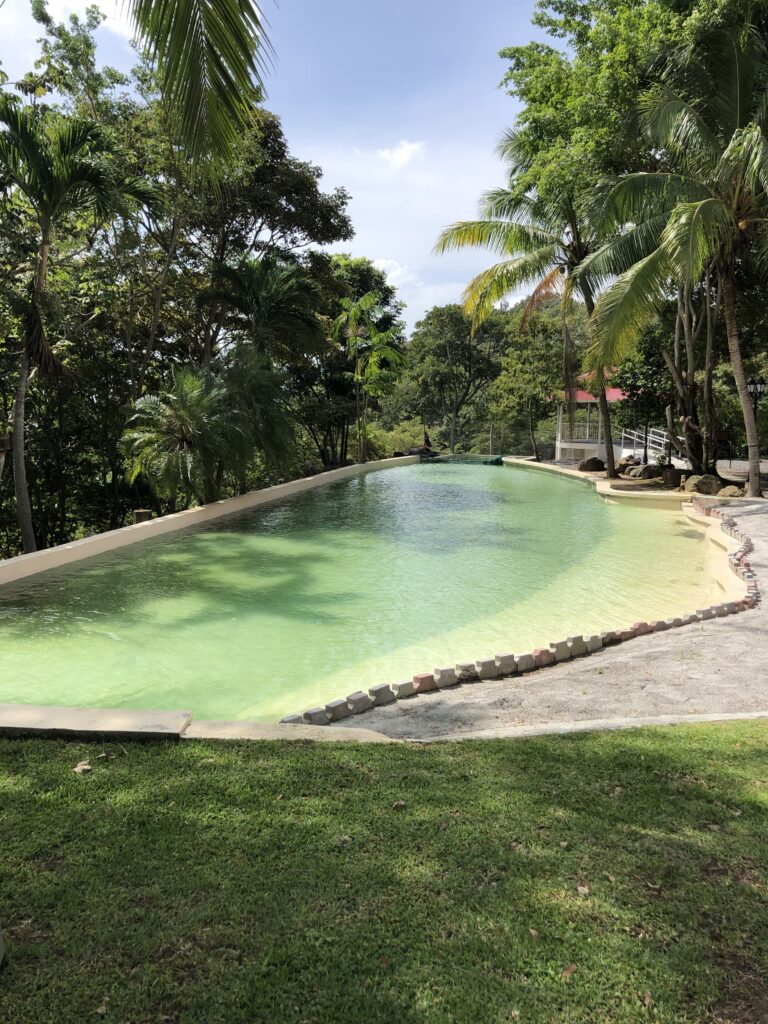
1 thought on “Nature and History in the City: Cerro Ancon y Mi Pueblito”
Comments are closed.